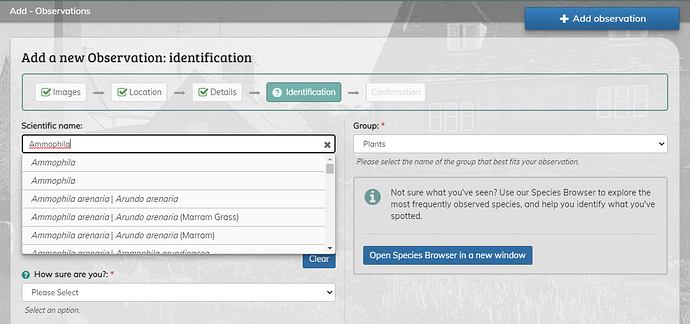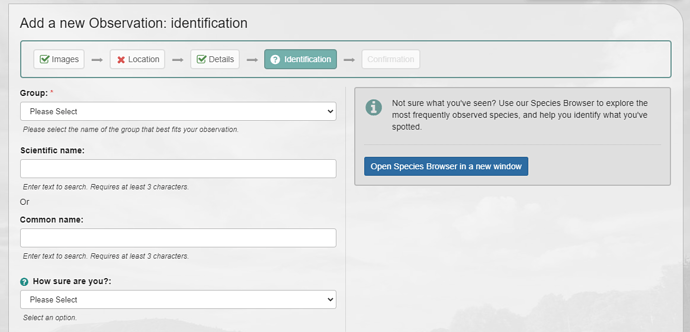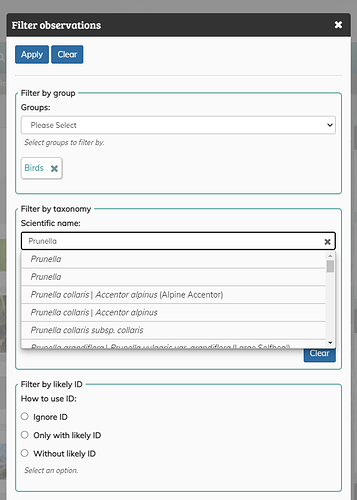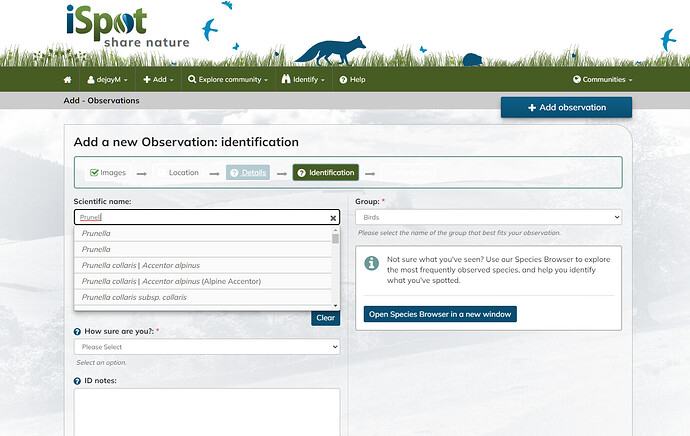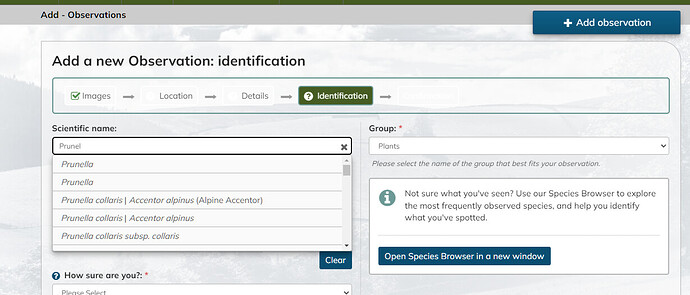While we’re giving viruses a mention in despatches, Severe acute respiratory syndrome coronavirus 2 (SARS-CoV-2) is the strain of coronavirus that causes coronavirus disease 2019 (COVID-19).
Possible
It is JUST possible to record a likely virus in iSpot
One - https://www.ispotnature.org/communities/uk-and-ireland/view/observation/644628/clematis-virus
Another - https://www.ispotnature.org/communities/uk-and-ireland/view/observation/780756/gall-on-salix
We should be listing these. Someone, one day, MIGHT (only might) be interested
A new one today
https://www.ispotnature.org/communities/uk-and-ireland/view/observation/293211/
Please shift the Banner above DONE thanks but look how confusing it is
.
… let’s have Reports HERE Please
So that the Curator can produce a Definitive List for the Species Browser or Home Page
1 Prunella - I have no idea which, in the drop-down, is the Flower
2 Collinsia is a Plant or a Spider. The FIRST in the Drop-down is the Spider (I discovered)
3 Sphaeridium added 7 Feb
Have been discussing this with programmer working on new dictionaries so these examples will be useful for him. Some of the ideas include selecting main group before the dropdown, little icons beside the species name etc but some of these may be much more tricky than others and may also have big usability issues
It would HELP a lot if others would assist with this task - Coders are working on Taxonomy as we ‘speak’.
PLEASE, if you find one, make a note as to WHICH in the drop-down is WHICH
Sphaeridium is both a Fungus and a Beetle
https://www.ispotnature.org/communities/uk-and-ireland/view/observation/105076/
A thing I keep forgetting to mention, when I witter on about the problems of taxonomy: according to the many rules that govern (or attempt to) the naming of new species, it is entirely acceptable to use a generic name that has been used elsewhere. The only prohibition is to use it emphasized textwithinemphasized text the same broad taxonomic group. So, two unrelated invertebrates should not have the same generic name. but an invertebrate and a fungus may do so with impunity.
“broad taxonomic group” isn’t quite right. The situation is that names can’t be reused within the scope of a nomenclatural code. But you can have the same name used once in the domain of the zoological code (ICZN) and once within the domain of the botanical code (ICN, formerly ICBN). The zoological code covers animals, and the botanical code plants, algae, and fungi; protists are semi-arbitrarily divided between the two codes based on the old procrustean dichotomy. Some protist groups have names under both codes; for example, the family Amoebidiidae is closer to animals than to fungi, and therefore has a name with the ICZN suffix -idae; it used to be considered a fungal group, with the name Amoebidiaceae, using the ICBN suffix -aceae.
Bacteria used to be covered by the botanical code, but are now covered by the bacteriological code (ICNP). There is also the viral code (ICTV), and PhyloCode, which is an alternative, unranked, scheme, applicable to all life. I don’t know offhand how the ICNP and ICTV interact with the ICZN and ICN; however the requirement the viral genera end with the suffix -virus reduces the risk of a conflict. (I could imagine a plant generic name ending in -virus by coincidence, but the IPNI database doesn’t contain any examples; the nearest occurrence is the epithet virusana/um.)
The out of date dictionary keeps us safe from this one.
https://en.wikipedia.org/wiki/Phyllodoce_caerulea and
Ammophila is a grass and a ‘wasp’
See https://www.ispotnature.org/communities/uk-and-ireland/view/observation/808182/wasp
The SECOND in the drop-down is the Invert.
I wonder whether a solution ( i.e program change) is to limit the id options in the dropdown when the Group is chosen.
.
I think posters could reasonably assume that if IPlants is chosen then only the Marram grass Ammophila should appear. And if Animals is chosen then the Ammophila in the dropdown options should be the wasp.
.
I tried the current situation and Plants shows both as does Animals.
Currently we can add the Group when it’s our OWN observation, not if correcting someone else’s
Eventually I would see, in duplicated genera, something like this IN the dropdown
Prunella (Bird)
Prunella (Plant)
Prunella collaris
Prunella grandiflora
What about shifting the group box from the right side to the left side and perhaps suggesting people fill that in as well i.e. before the species name so that they can’t get the names from the wrong group. It is only a slight change to the ID input but it might be enough.
Looking back HOW iI did the illustration in my mine above. I DID chose the Group but still had to choose from two identical IDs in the dropdown.
I suspect your idea will have the same result. iSpot recognises WHICH we choose, then allocates the Group from the Dictionary Browser.
I suspect, even in the old days, choosing (and fixing) the group did not help us choose the right Prunella (of two). Even Wiki defaults to the Plant!
Here, I have attempted to use the Explore Community Filter, with the view to listing early Prunella. As you see, I asked for the Bird but STILL had to choose from the drop-down. Plant has the same result, no Group the same.
OK, thanks this is exactly what needs to be looked at, will pass this onto programmers to look into how items are chosen
Will these things get remembered @miked
The 2017 tester G-sheets are FULL of forgotten stuff
The Forum Bot reminds me that I am Reviving an old topic.
I knew already
That would be very useful. At the moment, the group selector doesn’t really help much!
No need. Look at this
I typed in Birds
Then Prunel…to get the choices
When you click the WRONG one Group changes to Plants and vice versa.
.
But it is still an issue for most users who do not look at Group when choosing from the Dictionary.
We are now used, now, to Auto-selection, so rarely look at Group
Watch for rare genus of Salix Animalia / Chordata / Ascidiacea / Enterogona / Polycitoridae / Salix
the first ID in the Dropdown - NOT in the new Dictionary
Your example shows that the group changes if the ‘wrong’ genus is selected from the dropdown; that needs an experienced eye to spot it.
.
I was suggesting that when the group is chosen only the genus in that group is offered.
It doesn’t care - choosing the Group first has no influence on the choices offered
@Chris_Valentine is thinking of putting an Icon beside the Choice. I’d prefer Invert or Fungi because the Icons are quite similar
Worse, it accepts any Group and ignores our desires!



